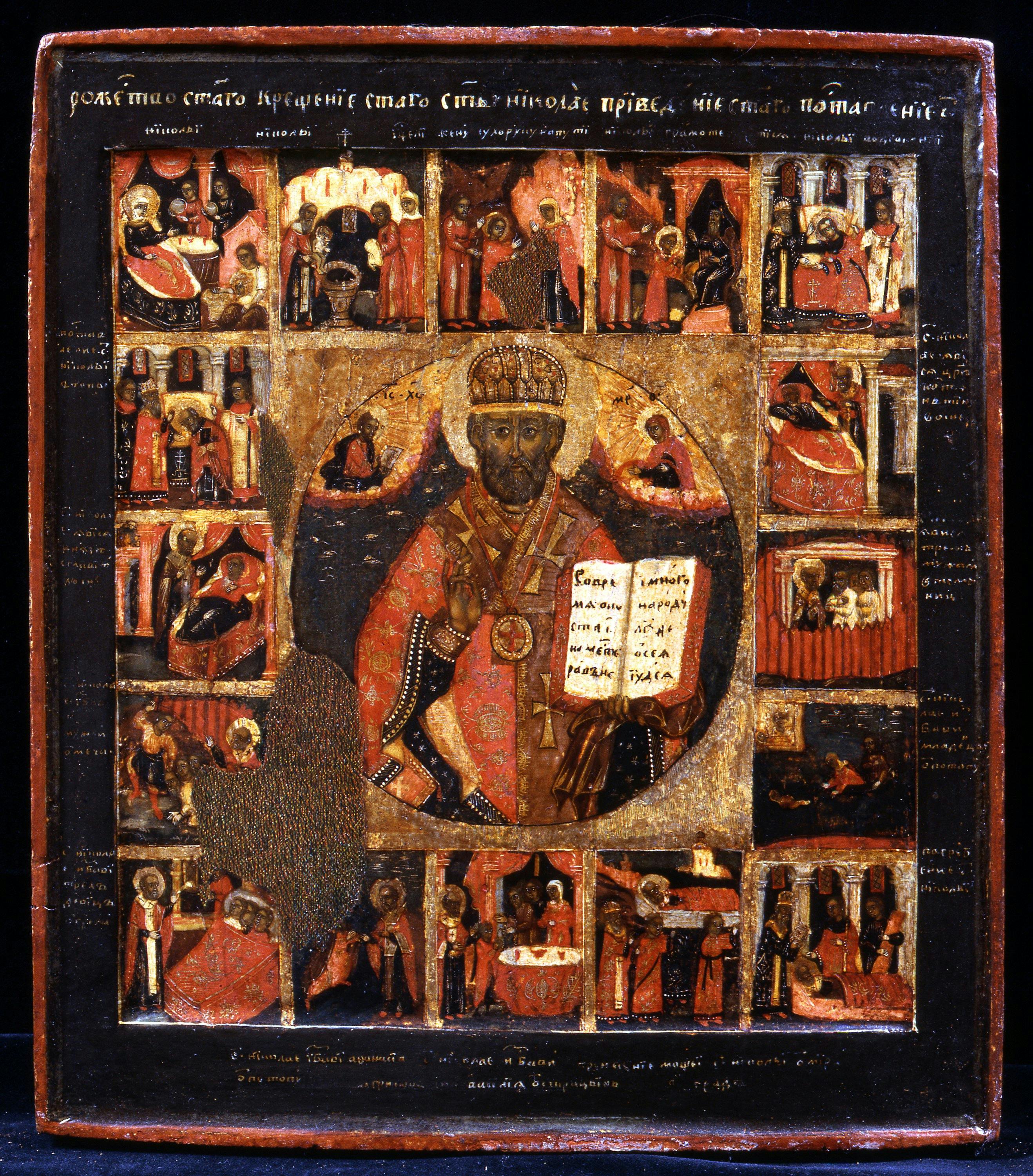St. Nicholas the Thaumaturge, with scenes from the story of his life
Central Russia
The icon is devoted to St Nicholas, bishop of Myra, depicted in the centre with an open book showing an excerpt from the Gospel of Luke (6.17) in which Christ is preparing for the Mount of Beatitudes sermon. The circular medallion containing the bust of the patriarch is perhaps intended to allude to the circular effigy of the saint which is said to have miraculously moved from Kiev to Novgorod in the 12th century. In horizontal registers, left to right, and top to bottom, the scenes depict: Nicholas's birth; his baptism; Nicholas healing a woman; his studies beginning; the saint ordained deacon; the saint ordained priest; Nicholas appearing in dreams to Emperor Constantine and Patriarch Ablabius to persuade them to free three prisoners; Nicholas appearing to the three prisoners; Nicholas saving the three prisoners from the death sentence; the saint saving a boy from drowning in Kiev; the saint giving a dowry to three poor girls; the saint saving Athanasius from shipwreck; Nicholas saving the boy Basil from his Saracen kidnappers; the translation of the Nicholas relics from Myra to Bari; the burial of St Nicholas. More traditional episodes also common to western iconography, then, such as the gift of the dowry and the freeing of the prisoners, appear alongside more specifically Russian miracles. Bishop Nicholas is thus presented as a thaumaturge and intercessor for all Christians.
The icon's painting work is more precise and detailed in its central effigy and the relationship between the figures with their elongated proportions and the figurative space is more harmonious in this section. The lateral stories, on the other hand, feature a jumble of architectures and figures in larger proportions and a more approximate style echoing the Menologium style (inv. 1890 nos. 5954-5955). These stylistic and qualitative differences are frequent in icon painting and should not be seen as a sign of more than one artist having worked on the icon.
